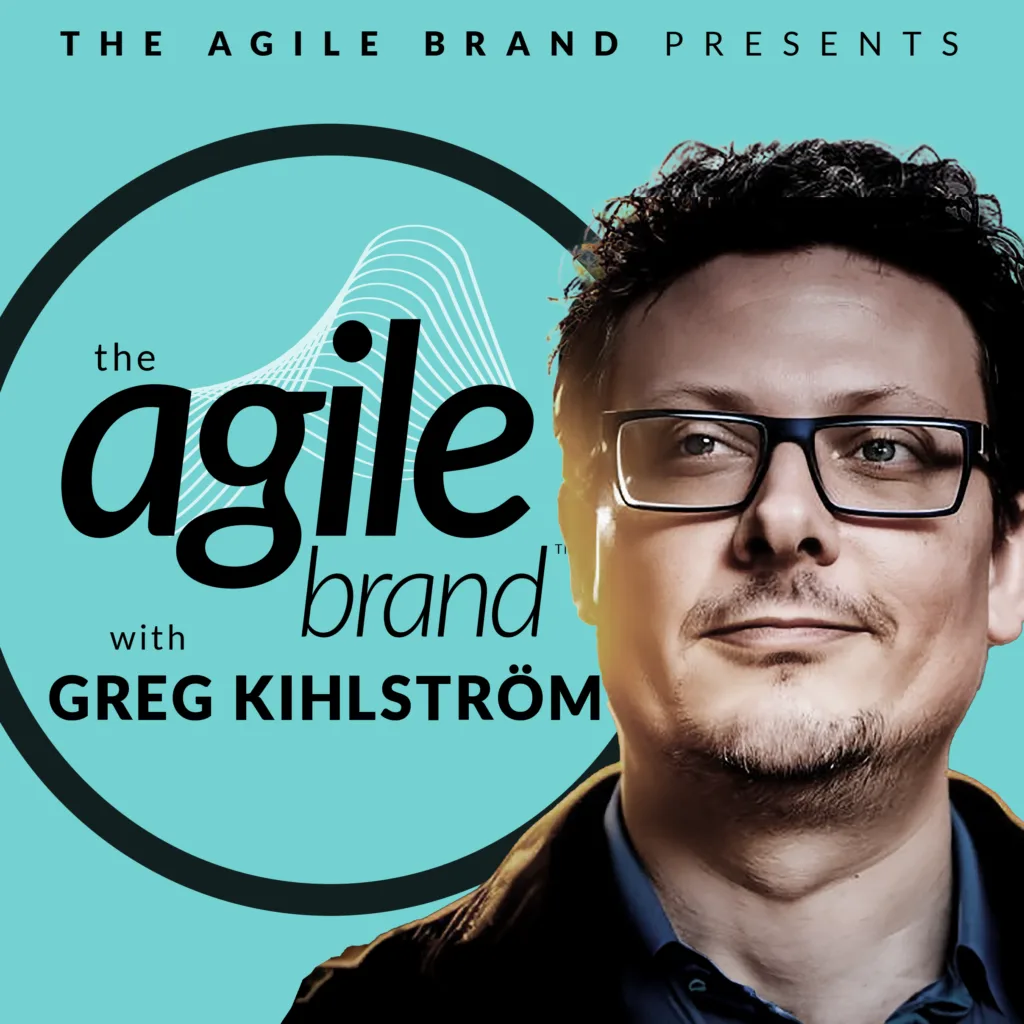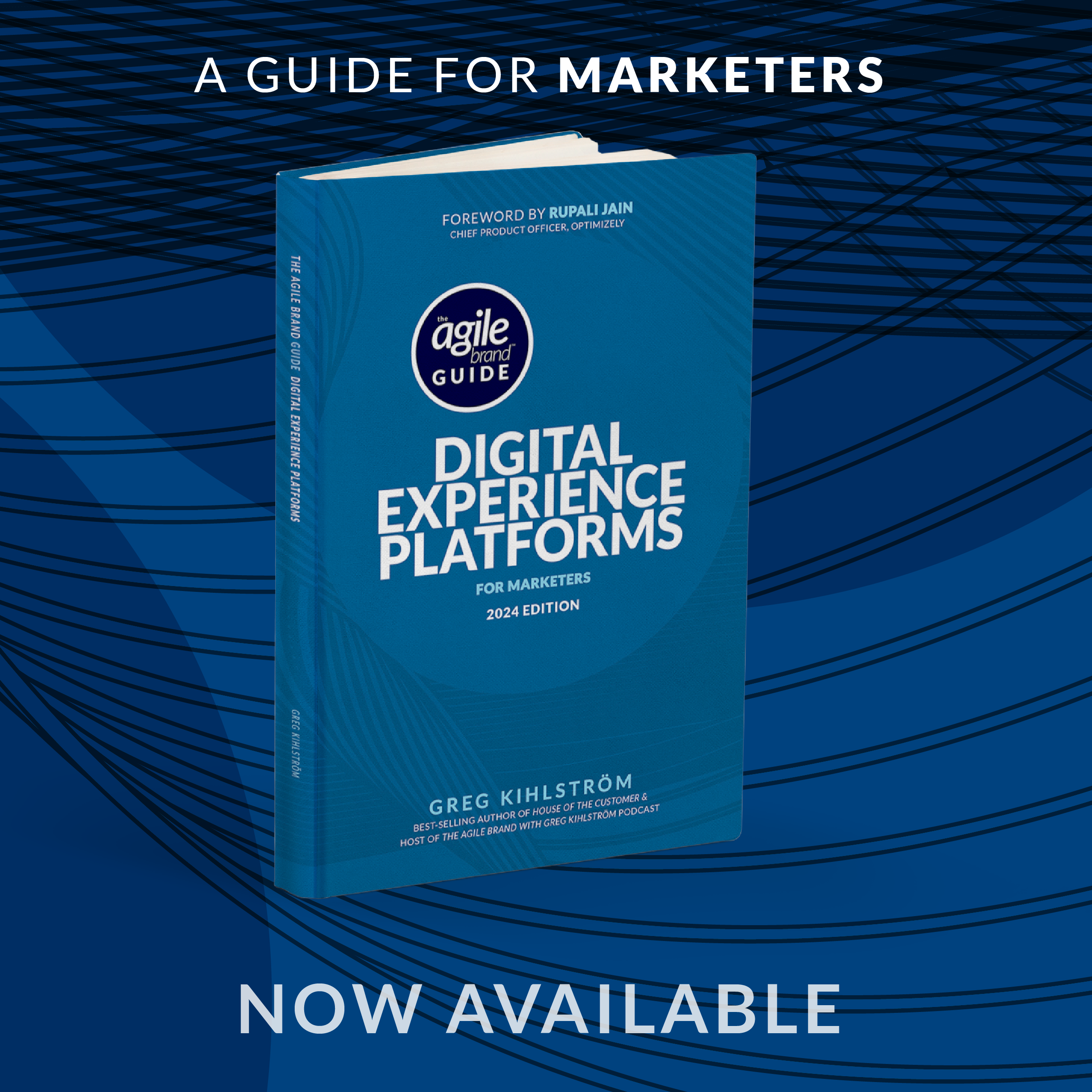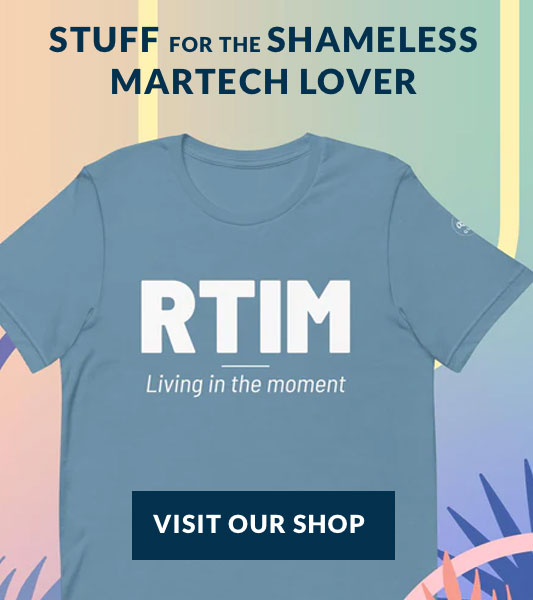In the gaming world, capturing the attention of hardcore gamers requires innovative approaches. One such approach that is creating waves is in-play advertising, which integrates ads seamlessly into the gameplay experience. Today, we’re joined by Shahar Sorek, CMO of Overwolf, who will share insights into why PC games are becoming a goldmine for brands and how Overwolf is leading this shift.
Resources
Connect with Greg Kihlström on LinkedIn: https://www.linkedin.com/in/gregkihlstrom
Headed to MAICON 24 – the premier marketing and AI conference? Use our discount code AGILE150 for $150 off your registration code. Register here: http://tinyurl.com/5jpwhycv
Don’t miss the Mid-Atlantic MarCom Summit, the region’s largest marketing communications conference. Register with the code “Agile” and get 15% off.
Don’t miss a thing: get the latest episodes, sign up for our newsletter and more: https://www.theagilebrand.show
Check out The Agile Brand Guide website with articles, insights, and Martechipedia, the wiki for marketing technology: https://www.agilebrandguide.com
The Agile Brand podcast is brought to you by TEKsystems. Learn more here: https://www.teksystems.com/versionnextnow
The Agile Brand is produced by Missing Link—a Latina-owned strategy-driven, creatively fueled production co-op. From ideation to creation, they craft human connections through intelligent, engaging and informative content. https://www.missinglink.company
Transcript:
Note: This was AI-generated and only lightly edited.
Greg Kihlstrom:
In the gaming world, capturing the attention of hardcore gamers requires innovative approaches. One such approach that is creating waves is in-play advertising, which integrates ads seamlessly into the gameplay experience. Today, we’re joined by Shahar Sorek, CMO at Overwolf, who will share insights into why PC games are becoming a goldmine for brands and how Overwolf is leading the shift. Shahar, welcome to the show. Hi, Greg, a pleasure to be here. Yeah, looking forward to talking about this with you. Before we dive in, why don’t you give a little background on you and your role as CMO at Overwolf?
Shahar Sorek: Sure. So I guess I’ve kind of spent every decade of my life in a different vertical and profession. It started from actually martial arts, went into show business where I was an actor and then a producer. And then, since I was a closeted gamer for many years, went into having my own game studio as a founder and CEO, and eventually folding and helping Overwolf kind of lead the user-generated revolution in gaming. And as a CMO in Overwolf, Overwolf is creating a new profession. We’ll talk about that. It’s called an in-game creator. And it’s a company that has multiple business groups that allow it to support this type of initiative. And it really leans heavily on on advertising in PC games and more and basically came up with a very unique way to bridge between extreme gamers that became kind of third party creators the games themselves and advertisers. There’s a very unique way for advertising to reach gamers while they play.
Greg Kihlstrom: Great, great. So yeah, let’s and we’re gonna we’re gonna talk about that. And so I think there’s a lot of marketers and advertisers listening to the show, certainly understanding that, you know, it’s just it’s getting tougher and tougher to meaningfully reach our audiences, right? And so traditional advertising methods are facing ad blockers. There’s the whole cookie deprecation thing going on. There’s lots of things that are standing in the way of advertisers reaching effectively their audiences. And so in-play advertising looks and seems like it offers a different way of engaging as you briefly described. But I wonder if you could maybe dive a little deeper and describe what is in-play ad advertising look like for somebody playing something like Minecraft or Fortnite? And why is this format less intrusive than traditional advertising?
Shahar Sorek: Great. Great question. I want to start and say that everything you’ve said is completely true ad blocking hard to access. The audience isn’t anywhere else. They’re just in game. But on top of it we have a migration of advertising dollars and we’re going to see that intensify over the next few years from traditional media like billboards and TV and whatnot into games because games are becoming the platform where Gen Alpha and Gen Z and millennials are spending their time. So All that advertising dollar needs to reach games. A lot of them are AAA games or hardcore games like Fortnite and Roblox and Minecraft and many many more. And currently there is no major player within the PC gaming community and the hardcore gaming community that has captured the attention of these gamers. The reason for that being is that these gamers are in the game. They usually play premium for getting the game and they do not have any patience for ads. Saying that, there is a category in there that we’ve kind of helped build and establish, which is very different than any of the ways you would think you can advertise to gamers within these games. So basically, Overwolf has a platform. and a technology that can extract real-time game events within pretty much any game, and that then a player can build all sorts of applications on. I’ll give a gaming example to make it clear, and then I’ll give a regular example for the non-gamers. So imagine you’re playing Fortnite, and as you’re playing the game, you want to know what’s your kill-to-death ratio. You want to know how long you’ve played, what you’ve won, Fortnite doesn’t give you those abilities, but you could go to the Overwolf app store and download Fortnite Tracker, which is a screen that can open on your screen. And as you’re playing, it starts to track real-time stats on you, on your competitors. You can then export files and shoot them out. So it gives you this great platform, which you can then have all sorts of stats and benefit your gameplay and help you play better. and also kind of share the most important stats. Now, this application is separate to the game. You don’t need anything from the game to it. You just need to download it and can sit on the game. Everything is completely legit. And within this application, this application is also built usually by a player, a regular third party person, not by us. We just help externalize the KPIs. And as this is playing, it runs ads in particular moments. in the game. So you can match a kill with an ad. So it makes the ad extremely relevant to moments that matter in the game. So as opposed to other advertising platforms that try to capture gamers attention, whether by environment ads or billboard ads or whatnot in the game environment, this particular method manages to kind of grab the attention of the gamer in their most heightened and the most heightened emotional state, whether it’s a loss or a win or an assist, we can trigger all sorts of ads emotionally, which makes them the brand and an ad be extremely effective. Now, imagine if you’re not a gamer, if you’re watching the movie Jurassic Park and there’s a rapper around the movie and every time you see a dinosaur, you can know its name. or you know where to orient in the screen. And it’s something that if you want, you can have. And if you’re a fan of dinosaurs, you can get, or let’s say you want to know where the actor, if he or she played in other movies, you could get that stats. This is basically what a rapper does. And many, many gamers that play these games use them in all sorts of ways. So it’s a very popular way. And also the gamers themselves they’re approving of this way of advertising because they know it’s one of their community members that went out and created a very relevant application to benefit their gameplay. So they’re saying it’s OK that there’s ads because we know they’re benefiting from it. And for some of them, they’re really making a living out of it.
Greg Kihlstrom: Yeah, well, and it seems like the major players like Xbox and others are adopting this as well. So, you know, it sounds like not only players are maybe, let’s say, less averse to this than other forms of advertising, but also the platforms themselves are seeing some value. Could you talk a little bit about what’s in it for an Xbox in this scenario?
Shahar Sorek: So, what’s going on right now with Xbox or PlayStation 5 is that we’ve launched with a game called Ark Survival Ascended, a cross-platform, cross-play modding solution from within the game. So players can play and download mods from within the game. Also, we have something called premium mods where you can actually buy the mods if they’re high-end. Specifically, we just launched with Hasbro the IP of Power Rangers within ARK, and it’s going very, very well. I think that we’re going to come to a place where the ads will need, the ad money will need to find itself to, or will need to bridge its way into games. And the way to do it, the way we think it’s going to be done is by user-generated content. Now, there are all sorts, this kind of kind of precedes our conversation but I think that there’s all sorts of all sorts of models that are going to come to games through UGC that will allow a mixtures of ads and premium to live together whether it would be lowering costs of premium titles and allowing ads in in ways that we haven’t seen yet.
Greg Kihlstrom: Overwolf, as you’ve mentioned, had some pretty steady and steep growth here. Latest numbers, you’re reaching about 100 million monthly gamers. So, you know, could you talk a little bit about, you know, your strategy in achieving this growth?
Shahar Sorek: Yes. So, So this growth is comprised out of several ad verticals, the last of which was we acquired a company called Nitro, which is a leading publisher for gaming websites, which allowed us to expand our reach tremendously. And we have our overlay apps, which are in the Overwolf app store. And we have Curseforge.com, which is one of the world’s leading modding websites. for sure the world-leading modding websites when it comes to Minecraft, World of Warcraft, ARK. We also have Stardew Valley and The Sims there, and a bunch of other titles. So we have this aggregated community of user-generated content creators. We have around 178,000 creators on the platform on one hand, and over 100 million people, gamers, that we can reach through all of our products and arms. So our vision is to be able to come to to an advertiser and be able to build a mix of direct programmatic media that could really capture their audience in several key points and create a cohesive advertising world in a world where it’s very hard to reach gamers. You mentioned ad blockers. A lot of the reach towards gamers is done on big websites like IGN and Fandom and so forth. It’s very tough once the ad blocker is on. So essentially, big portions of our traffic are unreachable and they’re only reachable through us. And the more we can expand this network and add more UGC types of products, the more reach we’re going to have. Now, our whole thesis sits on UGC, user generated content, which means creations by gamers for gamers in and around third party, in and around games, is going to drive the gaming world. The challenge with the gaming world, Greg, is that it’s way more complex than the TV world, where you have one show that is being watched nationally, and you know if you could get a spot on that show, you’ve killed, like, you know, the audience. Here, you have so many different games with so many different SAB genres. So you can have, like, a gigantic platform like Roblox, but the majority is 13- to 17-year-olds. while the 18 to 34-year-olds are spread across all these different titles. And our thesis is around UGC, which is we can reach all these audiences, and we’re reaching all these audiences through user-generated content. And by doing that, we also get the buy-in of the gamer and their acquiescence to ads.
Greg Kihlstrom: Yeah. I mean, it seems like it’s, yeah, it’s, it’s a, it’s a lot more palatable when the ad, you know, quote unquote ad that someone’s seeing is, is generated by someone from the community versus, versus another source. Is that, is that kind of the thinking with, with UGC then?
Shahar Sorek: Yes, definitely. Um, you know, one of our, one of our major, one of our major creators is a big, was a big he’s busy creating was a big League of Legends player. He built an app on overwolf that allows him to track real time stats in League of Legends. And you know short of it. Last year he sold his app for fifty four million dollars to a big public company because it’s so popular. So The magnitude of user generated content and the potential is tremendous. And I think that our strategy is to capture and own this vertical and serve basically the creators. We’re for the creators. We really envision a world where just like today there’s a streamer or a YouTuber or TikToker. There’s going to be an in-game creator. There is already. These are people who are going to, you know, build content for and around games. in a world where the games are going to live harmoniously with these creators and we’ll kind of creating the bridge and the bridge. Most of it is fueled by advertising. So there’s kind of this trinity of the creator the game studio and the advertiser and they live in peace and harmony versus I want to put up these ad blockers. I can’t stand the game. You know I already bought a game for 60 dollars. Why do I need to get ads in it. You know last year Game of the Year was Baldur’s Gate 3 and Baldur’s Gate 3 is a premium title. You can’t have any ads in it. But if you go to Oval you could download the Baldur’s Gate mini map and while you’re playing Baldur’s Gate you’ll put the mini map on to orient yourself in the game and that has ads in it. And the games are fine. So I think we’re going to see more and more of these expressions, especially the more money and the more the more the need of the market needs to find what to do with these dollars that are not effective in other forms.
Greg Kihlstrom: Yeah. So how do you how do you then balance between the the user generated content and then, you know, the brands? I mean, brands are suffering here, too, with ad blockers and all that. So are they do they function as individual users in this context? Or how would a brand do this in a way that still feels authentic to the player?
Shahar Sorek: Right, so we’re working with the brands to find out what is the best expression or what is the best vehicle for them to use within the UGC world to reach their audiences. A good example would be a campaign we ran with P&G with Dawn, on their wildlife foundation where they wanted to impact, via Don and their wildlife foundation, the environment and gamers recruiting themselves and helping the environment. And we went to the Minecraft community and we ran a campaign where the players would build environment, kind of clean environment surroundings, and then post them on social and we would amplify that and there would be a competition around that. And that’s something that went really, really well. And we saw players investing between 10 to 40 hours a week to build these magnificent environments. It won a bunch of awards. And that was proper for that type of activation on one hand. On the other hand, last year we did a campaign with Universal Studio around Five Nights at Freddy’s, where if you played League of Legends in some of the apps, when you would die when you played League of Legends and some of the apps when you would die or you would run away from your adversary, Freddy would come on screen and it did really well. So there’s all sorts of ways. It really depends on what the kind of USP of the brand is and what they want to get across. But there’s also another advantage to that is that we could do that fairly quickly, which is another thing worth mentioning, because a lot of what we’re seeing now is kind of these huge activations within Fortnite and Roblox. And these take a lot of time and a lot of money. And while some of them are really fantastic and are successful, most of them are not. And even if they are successful, they’re very hard to maintain. So you’re basically investing a lot for a one-off. And what you want to be able to do is hit the ground running really fast and be able to do it multiple times. And that’s another thing that our kind of environment and solutions can offer.
Greg Kihlstrom: Yeah, definitely. I mean, it seems like the, to your point, the ROI or return on ad spend, however you want to look at it for a very complex, rather static integration. I mean, it’s like inserting a brand into a movie, you know, probably similar, similar enough. Like it’s, it’s expensive. It’s not easy to edit. all those kinds of things versus this, and, you know, in a sense, democratizes that a bit. So I would imagine, you know, it sounds like, you know, you’re working, certainly with large, large organizations like PNG, but it also kind of democratizes a bit. So perhaps companies with smaller budgets or other things like that could could capitalize on this without having to, you know, break the bank, so to speak.
Shahar Sorek: Yeah, definitely. So, so, you know, another good example is, is Monster Energy. They needed to launch. They wanted to have a presence on the game day in Call of Duty. They wanted to have a presence on day one during playtime. And they came to us fairly late. And this is something that usually would take for a brand six to 12 months to integrate. And we did this activation in around four weeks. And we ran a campaign in over 24 countries and eventually also got Monster Energy to become the number one energy drink brand among gamers serving survey during the campaign. You can guess what the number one brand was prior to that. So there’s very you know we had we had we had a fairly amount fair amount of success running these things and we really want to push the boundary on this and really get it to the next level where we can become a substantial enough hub, if not the leading hub in advertising in the gaming world.
Greg Kihlstrom: That’s great. Well, Shahar, thanks so much for joining today. One more question before we wrap up here. Looking out ahead, what trends do you see shaping the future of in-game advertising? What advice would you give to brands looking to enter the space, which they’d be looking out for?
Shahar Sorek: So I think brands need to develop an expertise in the space and they need to work with the space. So just get into friction with the space because it will take time for brands to navigate. Well this space and it will take them time to build expertise. And like I said there’s many different verticals and sub genres within gaming. So work. do a big activation, do a small activation, work with us, work with others. And I think that that’s the general note for brands. Get your feet wet as soon as you can. And I think that generally speaking, we’re going to, in user-generated content, we’re going to see a massive growth in everything that we’ve talked about due to the issues that you’ve raised in the beginning of the conversations and more. And we’re going to see new monetizing models also around premium titles as we move forward. We’re talking about a year or two from now. Where these hundreds of billions of dollars that are going to move from from traditional media will have to find a way to get into the game Yeah, yeah, love it.












